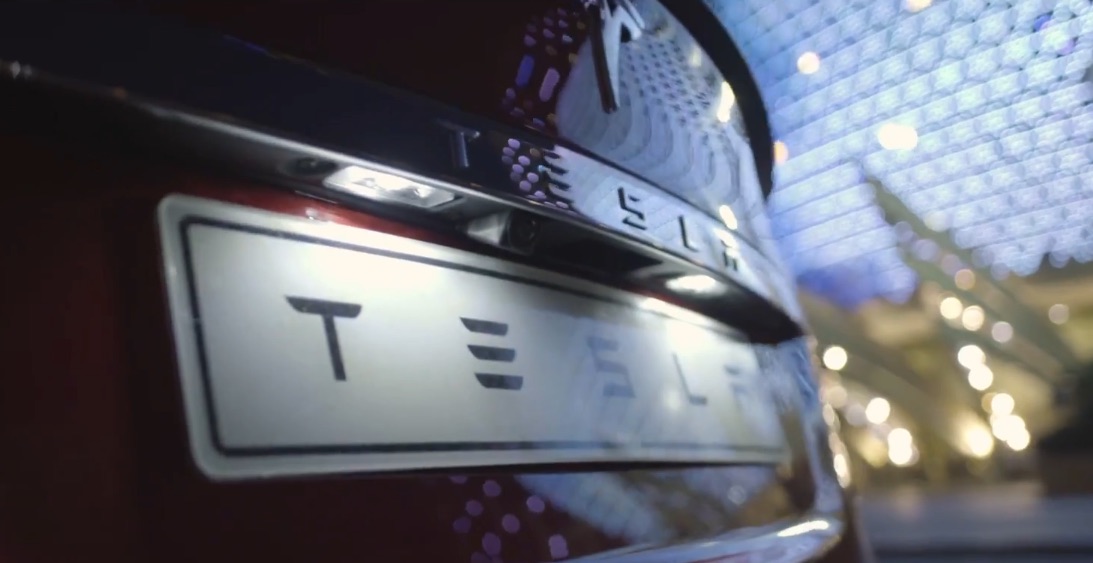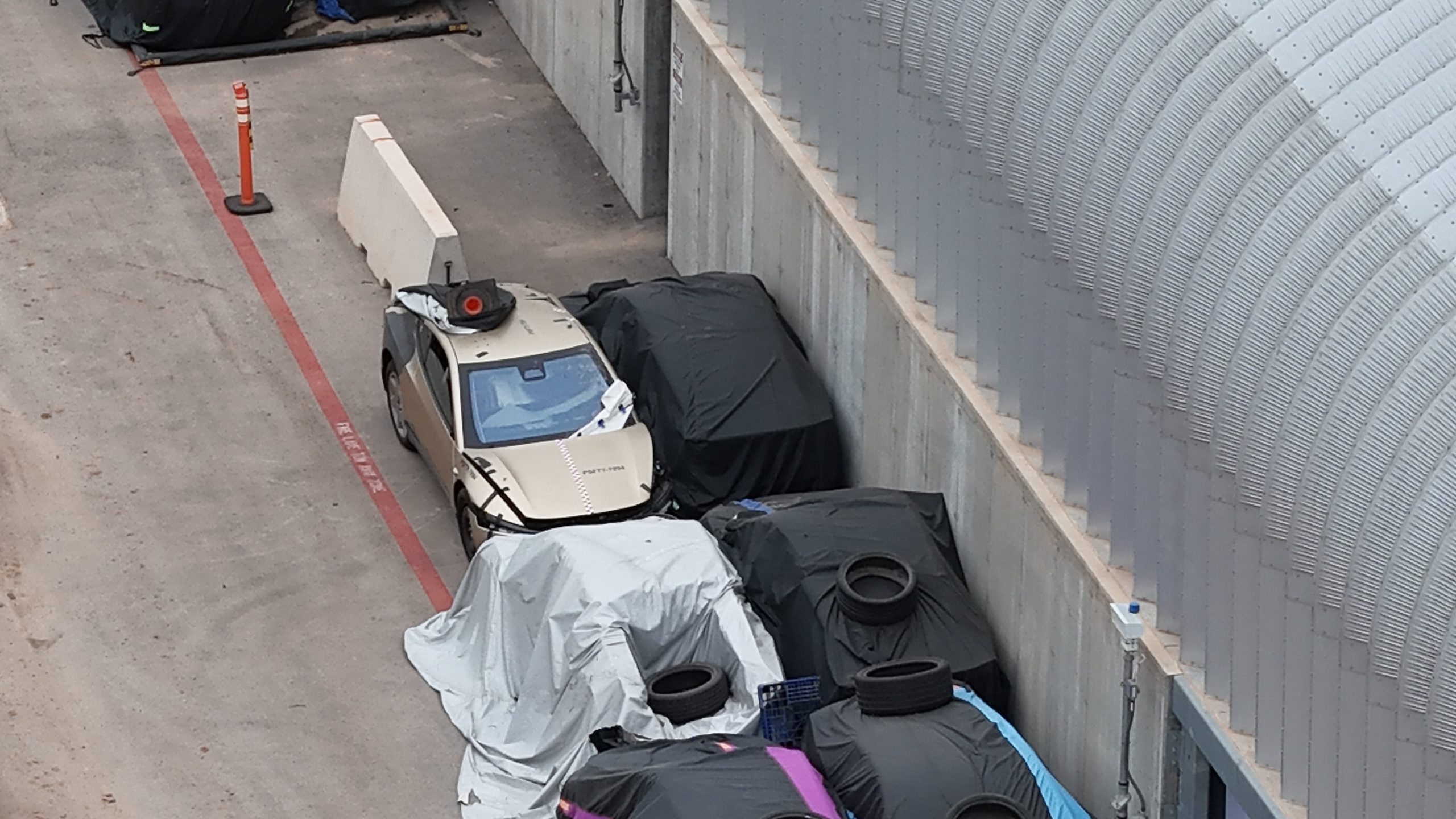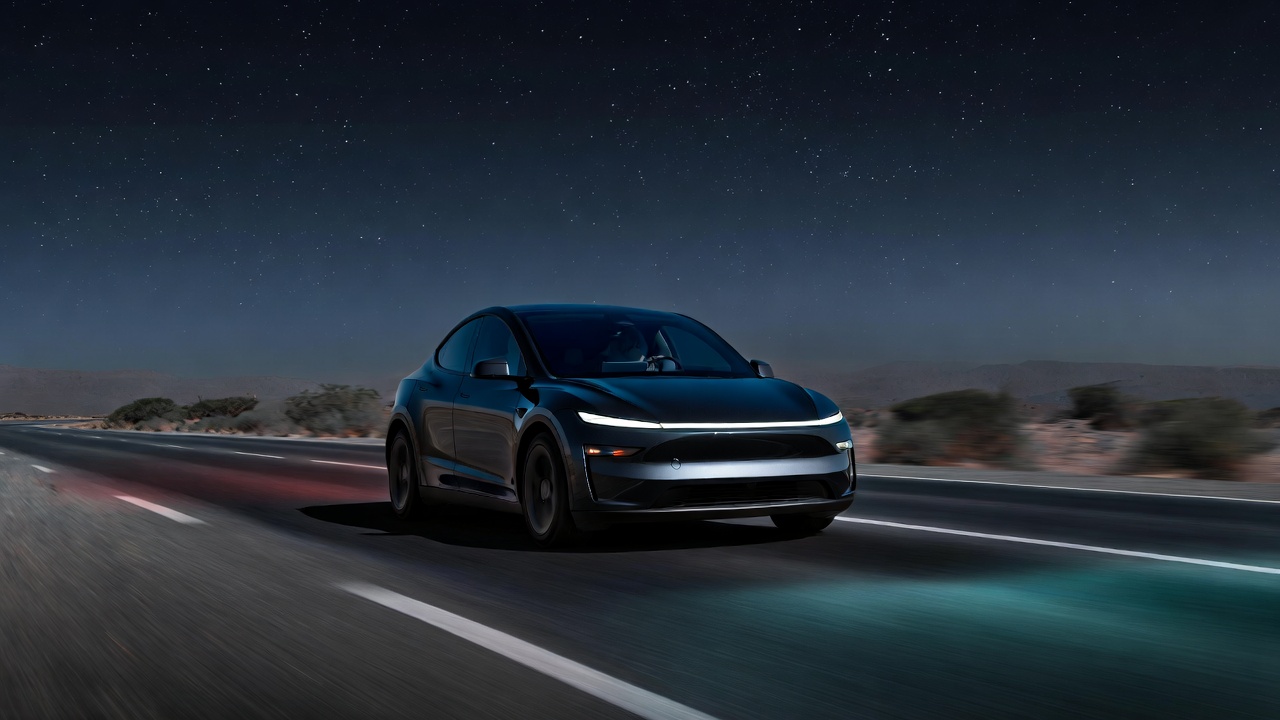

News
Tesla coverage turns negative a week before crucial Earnings Call
Tesla news coverage this week has been especially negative, and the timing of it, which comes a week before arguably the most anticipated Earnings Call in recent memory. With Tesla reporting production and deliveries that were well over Wall Street’s consensus, anticipation for the Q1 2021 Earnings Call is slightly higher than usual, and the FUD (Fear, Uncertainty, Doubt) is at an all-time high.
There are always a few negative Tesla stories every week. It might involve a story about some owners who didn’t receive adequate customer service, it might be about a production bottleneck that Tesla is encountering. However, these are relatively micro-scale issues that are resolved within a matter of days in most cases. This week, the news has been geared toward more disruptive, long-term, macro-level issues, like a very public car accident that has both sides of the Tesla circle butting heads, a test from a very well-known product review company that has to do with the aforementioned accident, and other safety issues that have resulted by a rumored irresponsible driving speed by a customer in China. Whether you agree with it or not, there seems to be a more coordinated attack on something that Tesla does well, which is to keep its drivers and owners safe. One of the strongest points of Tesla’s overwhelmingly successful venture into the automotive industry thus far was the company’s ability to keep vehicle occupants safe in the event of a crash, and also roll out software and semi-autonomous driving functionalities that aim to improve consumer safety in revolutionary ways.
This is a preview of our weekly newsletter. Each week I go ‘Beyond the News’ and handcraft a special edition that includes my thoughts on the biggest stories, why it matters, and how it could impact the future.
This doesn’t always turn out to be what the media wants to report, however. The week before the Q1 Earnings Call, it was relatively impossible to notice that the tide turned negative on Tesla news coverage. While it is understandable that a violent automobile crash that took the lives of two men should be covered, it captured national headlines and dominated news coverage across the world for several days. Interestingly, I don’t remember such widespread news coverage for the Ford Death Wobble.
Journalists find stories and then build upon them for other sorts of coverage. It’s spin-off coverage where readers get to see how creative the mind of a writer is. There are millions of stories that could be written based on the recent automobile accident. However, a majority of them were negative, and it doesn’t necessarily come down to truth, it comes down to perception. Unfortunately, I don’t believe that many of the journalistic coverages were completely accurate simply because of Autopilot’s misunderstood capabilities in the real world. I still receive questions and comments daily from those who I talk to who believe Teslas are capable of driving themselves. What is even more frustrating is that, at times, owners and drivers, who should have the company’s best interest at heart, spread content, Tik Toks, and other forms of social media portraying that their all-electric car can drive them from Point A to Point B while they sit in the back seat and take a nap. This kind of content is irresponsible, immoral, and wrong. Acting like a Tesla can drive itself completely just for few thousand views is a selfish act that puts the hard work of Tesla engineers at risk for losing all of their work.
That brings me to the unfortunate accident in Texas. We don’t know, yet, what the exact cause of the accident was. We don’t know who was in the driver’s seat, if AP was being tricked, or if it was even on at this point. Most evidence would likely indicate that AP couldn’t have been activated due to the lack of road lines, and the rate of travel isn’t something that AP would let the driver do, to begin with. Eventually, we will have all the facts of this story, and we will be able to accurately say who or what was responsible. But as of right now, those things cannot be speculated against.
Still, news sources are claiming that this car was “driverless,” which is a complete nonsensical narrative considering there are many boundaries that would require a driver to be present during the vehicle’s operation. This didn’t stop Consumer Reports from putting together one of the most ridiculously biased tests I have ever come across. I felt that it simply proved Tesla Autopilot would only be tricked in extreme circumstances, by not following the automaker’s directions and trying to outsmart one of the most capable semi-autonomous driving programs in the world.
The obvious effort to derail Tesla’s momentum is being noted by the fans, followers, and owners of the company. For the life of me, I cannot understand why. In my perspective, for years, MSM has been driving home the point of global climate change, using it as a way to scare people into change. While I believe that fear isn’t always the best way to convince a large group of people to do something, I think climate change is a real issue and it will affect people for generations to come. With cars being such a large contributor to the problem, you’d think the media, the same interests that have been preaching the dangers of carbon emissions for years, would report car companies who are working to transition the automotive industry to electrification, would get a “fair shake.” This just hasn’t been the case.
Trust me, I am a critic of Tesla when it is warranted. I have experienced issues with their customer service department personally, and I have been highly critical of their handling of other issues with its vehicles. I have spoken many times about the LR RWD Model Y and how it was a disgrace for Tesla to keep these pre-orderers in limbo for years. However, there are statistics that prove FSD and AP’s ultimate task: to make driving safer. Most recently, the Q1 2021 Safety Report showed Autopilot was nearly 10 times safer than a human driver. You don’t see mainstream media covering this, but you’ll notice automotive blogs and news outlets taking full advantage of the statistics, which prove Tesla’s mission is becoming more real with every mile driven.
With the momentum Tesla posted with the Production and Deliveries report, I think many people were expecting a big financial quarter. The timing of the negative news is eye-opening, and it seems to be a coordinated effort to perhaps slow down Tesla’s momentum moving forward. Tesla is gunning for yet another consecutive quarter, bringing the total to seven straight if things go well on Monday. Whether Wall Street will recognize the impressive tone of this feat, we’ll see. However, media coverage has done all it can to bring Tesla’s chances of a great quarter down, but with developments, demand, and deliveries all in healthy figures, there doesn’t seem to be much of a chance of that happening.
A big thanks to our long-time supporters and new subscribers! Thank you.
I use this newsletter to share my thoughts on what is going on in the Tesla world. If you want to talk to me directly, you can email me or reach me on Twitter. I don’t bite, be sure to reach out!

News
Tesla is not sparing any expense in ensuring the Cybercab is safe
Images shared by the longtime watcher showed 16 Cybercab prototypes parked near Giga Texas’ dedicated crash test facility.

The Tesla Cybercab could very well be the safest taxi on the road when it is released and deployed for public use. This was, at least, hinted at by the intensive safety tests that Tesla seems to be putting the autonomous two-seater through at its Giga Texas crash test facility.
Intensive crash tests
As per recent images from longtime Giga Texas watcher and drone operator Joe Tegtmeyer, Tesla seems to be very busy crash testing Cybercab units. Images shared by the longtime watcher showed 16 Cybercab prototypes parked near Giga Texas’ dedicated crash test facility just before the holidays.
Tegtmeyer’s aerial photos showed the prototypes clustered outside the factory’s testing building. Some uncovered Cybercabs showed notable damage and one even had its airbags engaged. With Cybercab production expected to start in about 130 days, it appears that Tesla is very busy ensuring that its autonomous two-seater ends up becoming the safest taxi on public roads.
Prioritizing safety
With no human driver controls, the Cybercab demands exceptional active and passive safety systems to protect occupants in any scenario. Considering Tesla’s reputation, it is then understandable that the company seems to be sparing no expense in ensuring that the Cybercab is as safe as possible.
Tesla’s focus on safety was recently highlighted when the Cybertruck achieved a Top Safety Pick+ rating from the Insurance Institute for Highway Safety (IIHS). This was a notable victory for the Cybertruck as critics have long claimed that the vehicle will be one of, if not the, most unsafe truck on the road due to its appearance. The vehicle’s Top Safety Pick+ rating, if any, simply proved that Tesla never neglects to make its cars as safe as possible, and that definitely includes the Cybercab.
Elon Musk
Tesla’s Elon Musk gives timeframe for FSD’s release in UAE
Provided that Musk’s timeframe proves accurate, FSD would be able to start saturating the Middle East, starting with the UAE, next year.

Tesla CEO Elon Musk stated on Monday that Full Self-Driving (Supervised) could launch in the United Arab Emirates (UAE) as soon as January 2026.
Provided that Musk’s timeframe proves accurate, FSD would be able to start saturating the Middle East, starting with the UAE, next year.
Musk’s estimate
In a post on X, UAE-based political analyst Ahmed Sharif Al Amiri asked Musk when FSD would arrive in the country, quoting an earlier post where the CEO encouraged users to try out FSD for themselves. Musk responded directly to the analyst’s inquiry.
“Hopefully, next month,” Musk wrote. The exchange attracted a lot of attention, with numerous X users sharing their excitement at the idea of FSD being brought to a new country. FSD (Supervised), after all, would likely allow hands-off highway driving, urban navigation, and parking under driver oversight in traffic-heavy cities such as Dubai and Abu Dhabi.
Musk’s comments about FSD’s arrival in the UAE were posted following his visit to the Middle Eastern country. Over the weekend, images were shared online of Musk meeting with UAE Defense Minister, Deputy Prime Minister, and Dubai Crown Prince HH Sheikh Hamdan bin Mohammed. Musk also posted a supportive message about the country, posting “UAE rocks!” on X.
FSD recognition
FSD has been getting quite a lot of support from foreign media outlets. FSD (Supervised) earned high marks from Germany’s largest car magazine, Auto Bild, during a test in Berlin’s challenging urban environment. The demonstration highlighted the system’s ability to handle dense traffic, construction sites, pedestrian crossings, and narrow streets with smooth, confident decision-making.
Journalist Robin Hornig was particularly struck by FSD’s superior perception and tireless attention, stating: “Tesla FSD Supervised sees more than I do. It doesn’t get distracted and never gets tired. I like to think I’m a good driver, but I can’t match this system’s all-around vision. It’s at its best when both work together: my experience and the Tesla’s constant attention.” Only one intervention was needed when the system misread a route, showcasing its maturity while relying on vision-only sensors and over-the-air learning.
News
Tesla quietly flexes FSD’s reliability amid Waymo blackout in San Francisco
“Tesla Robotaxis were unaffected by the SF power outage,” Musk wrote in his post.

Tesla highlighted its Full Self-Driving (Supervised) system’s robustness this week by sharing dashcam footage of a vehicle in FSD navigating pitch-black San Francisco streets during the city’s widespread power outage.
While Waymo’s robotaxis stalled and caused traffic jams, Tesla’s vision-only approach kept operating seamlessly without remote intervention. Elon Musk amplified the clip, highlighting the contrast between the two systems.
Tesla FSD handles total darkness
The @Tesla_AI account posted a video from a Model Y operating on FSD during San Francisco’s blackout. As could be seen in the video, streetlights, traffic signals, and surrounding illumination were completely out, but the vehicle drove confidently and cautiously, just like a proficient human driver.
Musk reposted the clip, adding context to reports of Waymo vehicles struggling in the same conditions. “Tesla Robotaxis were unaffected by the SF power outage,” Musk wrote in his post.
Musk and the Tesla AI team’s posts highlight the idea that FSD operates a lot like any experienced human driver. Since the system does not rely on a variety of sensors and a complicated symphony of factors, vehicles could technically navigate challenging circumstances as they emerge. This definitely seemed to be the case in San Francisco.
Waymo’s blackout struggles
Waymo faced scrutiny after multiple self-driving Jaguar I-PACE taxis stopped functioning during the blackout, blocking lanes, causing traffic jams, and requiring manual retrieval. Videos shared during the power outage showed fleets of Waymo vehicles just stopping in the middle of the road, seemingly confused about what to do when the lights go out.
In a comment, Waymo stated that its vehicles treat nonfunctional signals as four-way stops, but “the sheer scale of the outage led to instances where vehicles remained stationary longer than usual to confirm the state of the affected intersections. This contributed to traffic friction during the height of the congestion.”
A company spokesperson also shared some thoughts about the incidents. “Yesterday’s power outage was a widespread event that caused gridlock across San Francisco, with non-functioning traffic signals and transit disruptions. While the failure of the utility infrastructure was significant, we are committed to ensuring our technology adjusts to traffic flow during such events,” the Waymo spokesperson stated, adding that it is “focused on rapidly integrating the lessons learned from this event, and are committed to earning and maintaining the trust of the communities we serve every day.”








